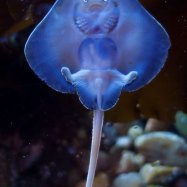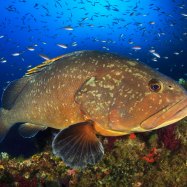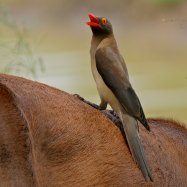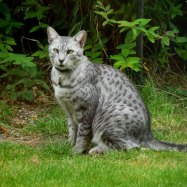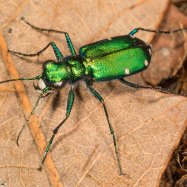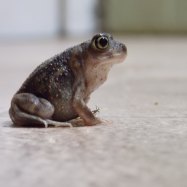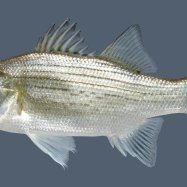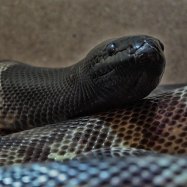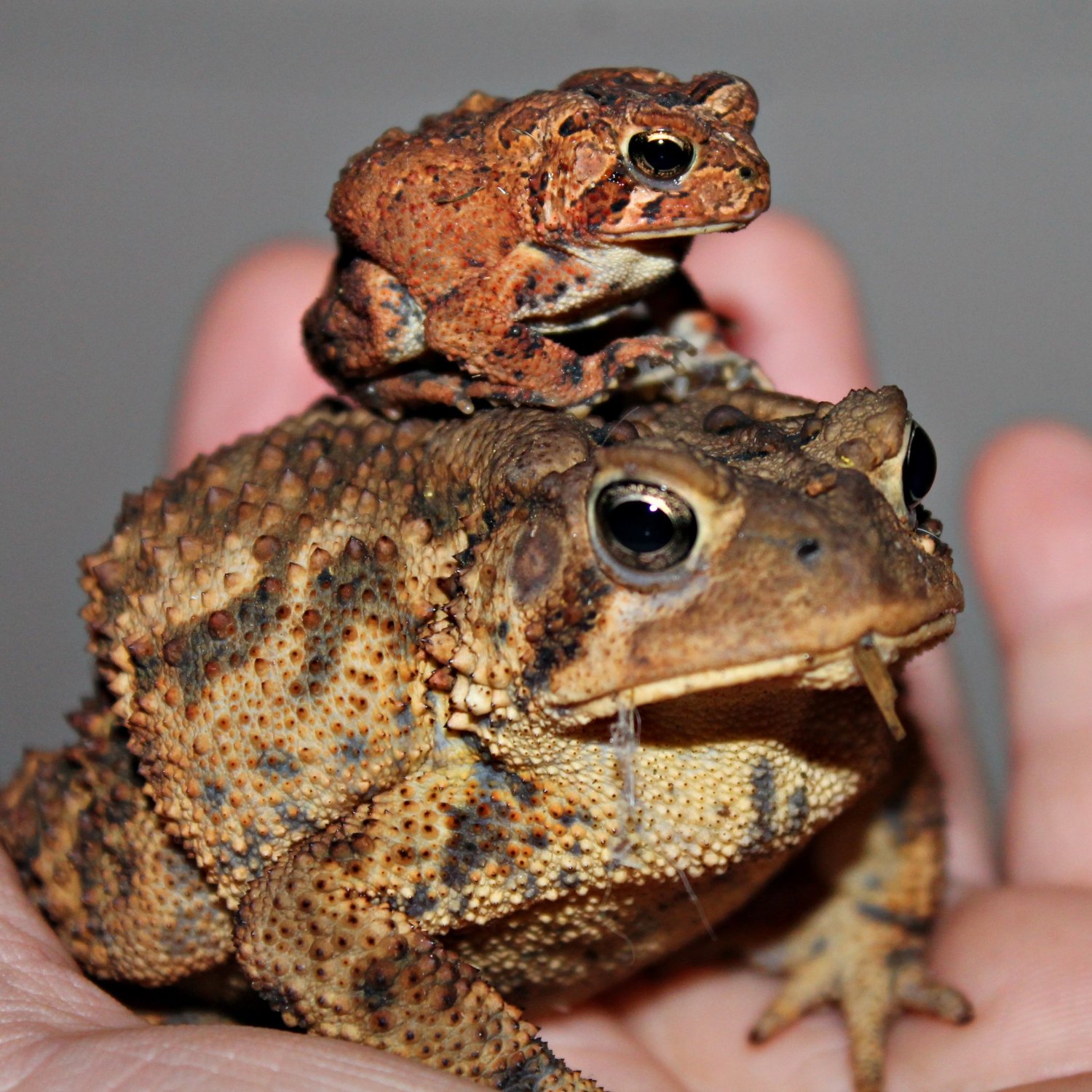
American Toad
2.5 - 3.5 inches
The American Toad, commonly found in North America, is a small amphibian with a stocky body, short legs, and a rounded shape. Growing to a length of 2.5-3.5 inches, this toad belongs to the Bufonidae family and is known for its distinct loud, musical call. Keep an eye out for this fascinating creature on your next nature walk! #AmericanToad #NorthAmerica #Bufonidae
Animal Details Summary:
Common Name: American Toad
Kingdom: Animalia
Habitat: Woodlands, grasslands, forests, fields, gardens
American Toad: A Fascinating Amphibian Found in North America
Amphibians have long fascinated humans with their ability to lead dual lives – one on land and the other in water. One such intriguing species is the American Toad, scientifically known as Anaxyrus americanus. This unique creature is commonly referred to as the American Toad and is found in woodlands, grasslands, forests, fields, and even gardens throughout eastern, central, and southern North America.The American Toad belongs to the Animalia kingdom, Chordata phylum, Amphibia class, and Anura (frog and toad) order American Toad. Within the Anura order, it falls under the Bufonidae family, which consists of true toads. These toads are easily recognizable due to their stocky body shape, short legs, and characteristic warty skin.
Habitat and Distribution
The American Toad is a widespread species that can be found in various habitats. They prefer living in areas with moist soil, such as woodlands, grasslands, and forests. They are also commonly found in fields and gardens, making them a familiar sight to many people.This toad species is native to North America, with its range extending from Canada to Mexico. They are found in the eastern, central, and southern regions of the continent, making them one of the most widely distributed amphibians in North America.
Physical Description
The American Toad is a medium-sized amphibian, with adults ranging from 2.5 to 3 Abyssinian.5 inches in length. They have a stocky body with short legs, giving them a squat appearance. Their body is rounded, and their skin is covered with numerous warts, making it appear bumpy and rough.One of the most impressive things about this toad species is their ability to camouflage. They have a variable coloration, but they are usually found in shades of brown, tan, or gray, with dark spots covering their body. This natural camouflage helps them blend in with their surroundings, making it easier for them to hide from predators.
Feeding and Diet
The American Toad is a carnivorous species, meaning they primarily feed on other animals. As adults, they have a varied diet, which includes insects, snails, spiders, worms, and small vertebrates like mice, lizards, and even other toads. Their diet also changes depending on their location and the availability of prey.They have a unique feeding mechanism, where they use their sticky tongue to catch their prey. Unlike frogs, they do not have a long, pointed tongue. Instead, their tongue is short and broad, making it perfect for snatching their prey. They use their strong jaws to crush their food before swallowing it whole.
Behavior and Adaptations
The American Toad is a nocturnal creature, meaning they are most active at night. During the day, they are known to hide under rocks, logs, or in burrows to avoid the hot sun. They are also solitary animals, preferring to stay in their own territory.These toads have a unique defense mechanism that proves to be highly effective against predators. When threatened, they secrete a toxic substance from their skin. This toxin, called bufotoxin, is highly irritating and can cause harm to potential predators. It also makes the toads taste unpleasant, making them an unwanted target for predators.
Country of Origin
The American Toad is indigenous to North America, with its range covering the United States, Canada, and Mexico. They have adapted well to their environment and can be found in many different habitats throughout the continent.Although their native range is limited to North America, the American Toad has been introduced to several other countries, such as Japan and China, where they are now considered invasive species.
Threats and Conservation
Sadly, like many other amphibians, the American Toad is facing numerous threats to its population. Habitat loss and degradation due to human activities, such as deforestation and urbanization, are some of the main factors contributing to their decline.Pollution, particularly from pesticides and fertilizers, also poses a significant risk to these toads. As amphibians, they possess permeable skin, which makes them highly susceptible to absorbing toxins from their surroundings.
In recent years, the American Toad has also faced a decline in its population due to the spread of a fungus called Batrachochytrium dendrobatidis. This fungus causes a disease called chytridiomycosis, which is deadly to many amphibian species.
Thankfully, the American Toad is not currently listed as an endangered species. However, conservation efforts are necessary to ensure their population remains stable and does not decline any further.
In Conclusion
In conclusion, the American Toad, also known as Anaxyrus americanus, is a fascinating and unique creature found in North America. With their nocturnal behavior, varied diet, and impressive camouflage abilities, these toads have managed to adapt and thrive in various habitats.However, as human activities continue to pose threats to their survival, it is essential to take steps to conserve the American Toad population. This includes measures such as preserving their habitat, reducing chemical use, and monitoring the spread of harmful diseases.
By learning more about these toads, we can appreciate and protect these amazing amphibians and ensure that they continue to have a place in our natural environment for generations to come.

American Toad
Animal Details American Toad - Scientific Name: Anaxyrus americanus
- Category: Animals A
- Scientific Name: Anaxyrus americanus
- Common Name: American Toad
- Kingdom: Animalia
- Phylum: Chordata
- Class: Amphibia
- Order: Anura
- Family: Bufonidae
- Habitat: Woodlands, grasslands, forests, fields, gardens
- Feeding Method: Carnivorous
- Geographical Distribution: Eastern, central, and southern North America
- Country of Origin: United States, Canada, Mexico
- Location: North America
- Animal Coloration: Variable; usually brown, tan, or gray with dark spots
- Body Shape: Stocky with short legs and a rounded body
- Length: 2.5 - 3.5 inches
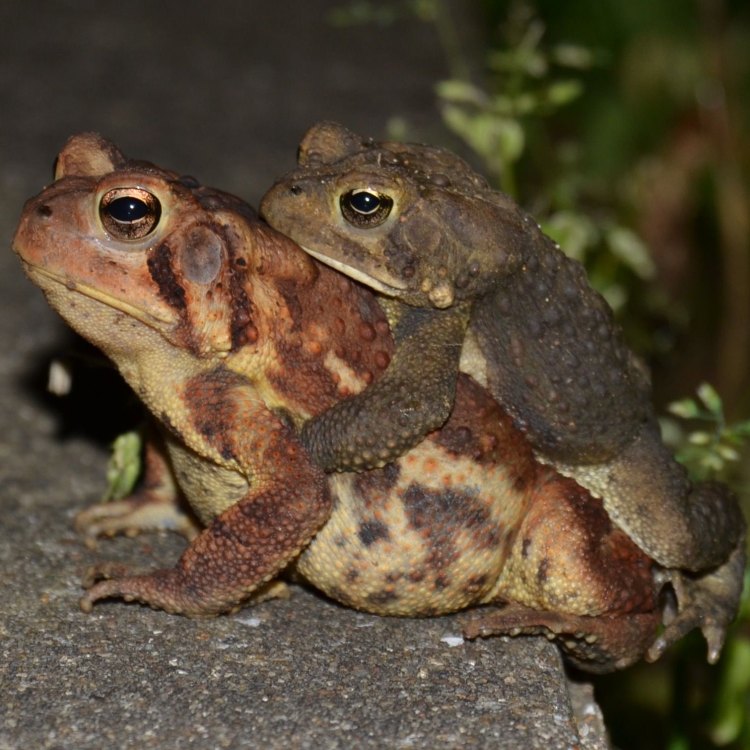
American Toad
- Adult Size: 2.5 - 4 inches
- Average Lifespan: 7 - 10 years
- Reproduction: Sexual
- Reproductive Behavior: Occurs during spring and early summer; males call to attract females
- Sound or Call: Loud trill or high-pitched whistle
- Migration Pattern: No regular migration pattern
- Social Groups: Solitary, except during breeding season
- Behavior: Nocturnal, burrows into the ground to escape predators
- Threats: Habitat loss, pollution, pesticides, road mortality
- Conservation Status: Least Concern
- Impact on Ecosystem: Controls insect populations, preys on harmful insects
- Human Use: Commonly kept as pets, used for scientific research
- Distinctive Features: Warty skin, prominent parotid glands behind the eyes
- Interesting Facts: Can inflate itself with air to deter predators
- Predator: Birds, snakes, mammals
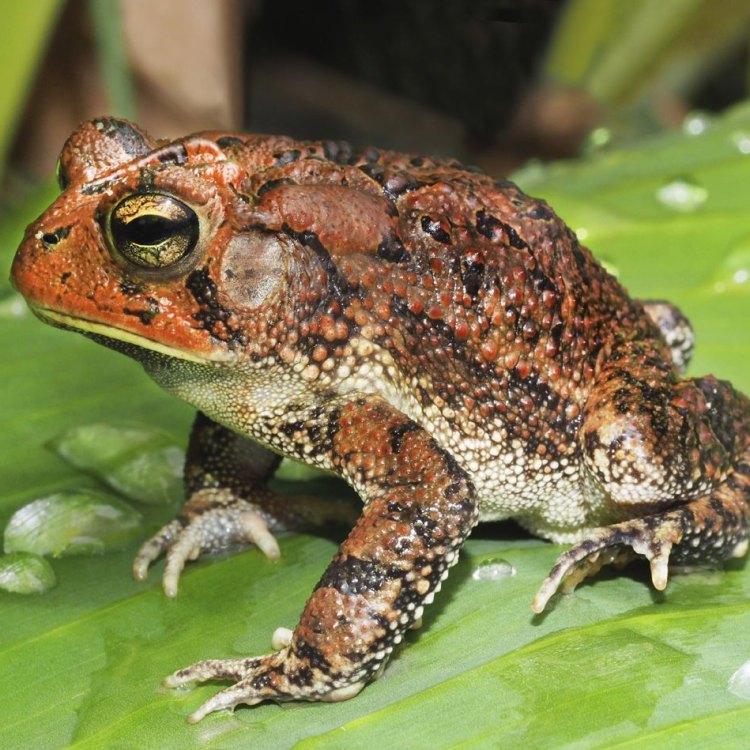
Anaxyrus americanus
American Toad: The Fascinating Amphibian of North America
When we think of amphibians, images of slimy frogs and salamanders usually come to mind. But there is one unique species that stands out among the rest – the American Toad. This fascinating creature has captured the attention of many with its warty skin, loud calls, and interesting behaviors. Let's dive into the world of the American Toad and discover what makes it so special PeaceOfAnimals.Com.Size and Lifespan
The American Toad, also known as Bufo Americanus, is a relatively small amphibian, reaching an adult size of only 2.5 to 4 inches. Despite its small size, it has a surprisingly long lifespan of 7 to 10 years in the wild. This can even extend up to 15 years in captivity. This means one toad can potentially live through many generations and witness the changes in its environment.Reproductive Behavior
The reproductive behavior of the American Toad is quite fascinating. It typically occurs during spring and early summer, when the temperatures are warm enough for breeding. Males will gather near water bodies and produce a loud trill or a high-pitched whistle to attract females. These calls can continue for several hours and can be heard up to half a mile away Addax. The female will then lay her eggs in shallow water, where they will hatch into tadpoles.Nocturnal and Solitary
Unlike some other social amphibians, the American Toad is a solitary creature. It prefers to live alone, only coming together with other toads during the breeding season. It is also a nocturnal animal, meaning it is most active at night. During the day, it will burrow into the ground to escape predators and maintain its body temperature.Distinctive Features
One of the most striking features of the American Toad is its warty skin. It is covered in small bumps that help it blend in with its surroundings, making it difficult for predators to spot. Another unique feature is its prominent parotid glands located behind its eyes. These glands secrete a toxic substance that can irritate predators or even be lethal to some small animals.Impact on Ecosystem
The American Toad plays an essential role in its ecosystem. As a predator, it helps control insect populations by preying on harmful insects. This helps maintain a balance in the ecosystem and prevents insects from causing harm to plants and other animals. On the other hand, the toad itself becomes prey for birds, snakes, and other mammals. This creates a food chain and keeps the ecosystem functioning.Threats and Conservation Status
Like many other species, the American Toad is facing several threats to its survival. The biggest threat is habitat loss due to urban development, deforestation, and conversion of land for agriculture. Pollution and the use of pesticides also harm toad populations by contaminating their habitats and food sources. Road mortality is also a significant threat as toads often cross roads during the breeding season.Despite these threats, the American Toad is listed as "Least Concern" on the IUCN Red List of Threatened Species. This is due to its wide distribution and relatively stable population. However, conservation efforts are still necessary to ensure the survival of this unique species.
Human Use and Interesting Facts
The American Toad has an interesting relationship with humans. It is commonly kept as a pet, especially in North America, due to its small size and low maintenance requirements. It is also used for scientific research, particularly in studies on the effects of pollution and changes in the environment.Aside from its physical features and behaviors, the American Toad has some interesting facts that make it even more fascinating. It has the ability to inflate itself with air to deter predators. By inflating, it appears larger and less appetizing, giving the toad enough time to escape. This behavior is known as "puffing up."
The American Toad: A Valuable Species
The American Toad may not be the most exotic or glamorous species, but it is undoubtedly a valuable one. Its important role in the ecosystem and its adaptations for survival make it a fascinating creature to study. As a pet, it can bring joy and curiosity to many, teaching us about the importance of coexisting with nature.So, next time you come across an American Toad or hear its loud calls, take a moment to appreciate this unique and vital species living among us. It is a reminder that even the smallest creatures have an essential place in our world.
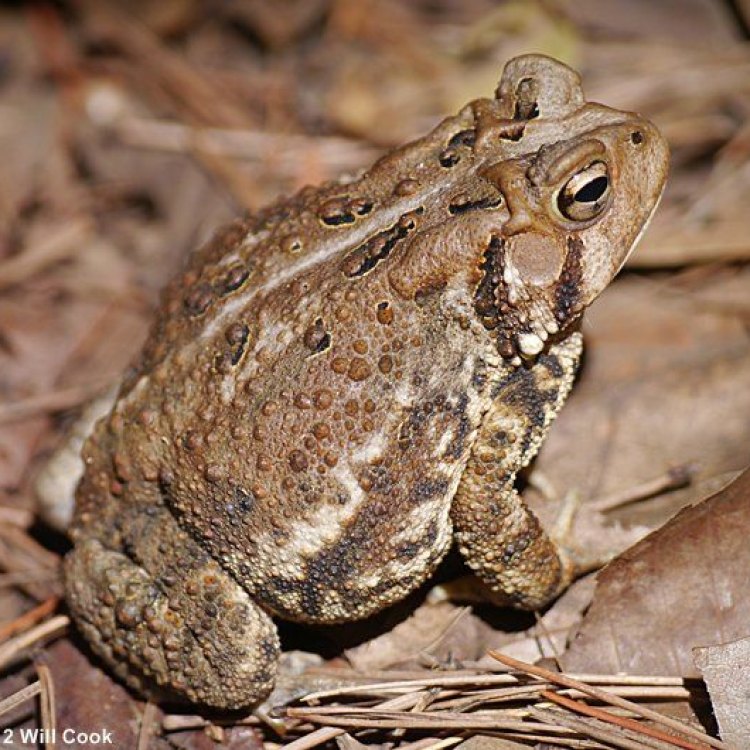
American Toad: A Fascinating Amphibian Found in North America
Disclaimer: The content provided is for informational purposes only. We cannot guarantee the accuracy of the information on this page 100%. All information provided here may change without prior notice.

